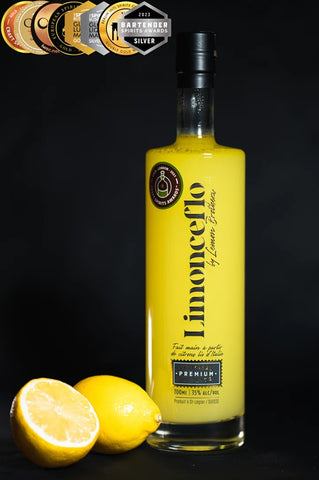How to produce a true original limoncello?
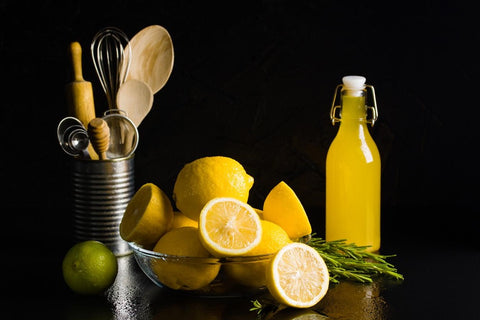
Introduction
In the sunny orchards of Italy, where tradition weaves through the air as tangibly as the scent of citrus, lies the heart of the "original limoncello" – a liqueur that captures the essence of summers. Limoncello, with its vibrant yellow hue, is more than just a drink; it is a cultural emblem steeped in Italian history and craftsmanship.
Originating from the picturesque regions of southern Italy, this lemon liqueur has been a symbol of hospitality and celebration for over a century. The country produces about 400,000 tons of lemons each year [1], so it is no surprise that one of their national drinks is citrus-based.
This article will explore the art of making original limoncello, examining the meticulous selection of ingredients, traditional infusion and aging processes, and the nuances that make each batch unique. Join us on a journey to the heart of this beloved Italian classic, cherished by limoncello enthusiasts worldwide.
The history of Limoncello
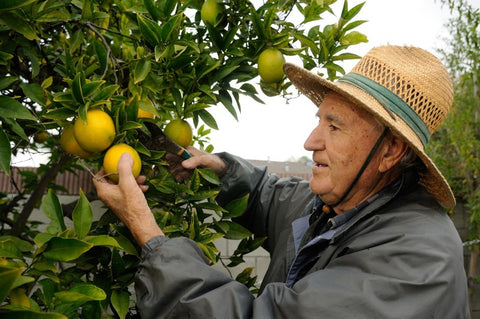
Limoncello finds its origins in the early 20th century, although some stories suggest it dates even further back to Italian monasteries of the Middle Ages. Traditionally, this liqueur was a homemade delight made by families as a luxurious digestif to enjoy after meals. Its recipe, often a closely guarded family secret, was passed down from generation to generation, each adding their unique touch to this zesty concoction.
Today, the cradle of limoncello production is in southern Italy, notably along the stunning Amalfi Coast, the Sorrento Peninsula, and the island of Capri. These regions are famous for their lush terraced lemon groves, where Sfusato Amalfitano and Sorrento lemons - renowned for their aromatic zest - thrive in the Mediterranean climate. These lemons are not just fruits; they are the soul of limoncello, imparting a flavor impossible to replicate elsewhere.
Simply put, the journey of limoncello from a homemade local specialty to a liqueur of international renown is a testament to its timeless appeal. It is not just a drink but a symbol of Italian hospitality, warmth, and the joy of living - 'la dolce vita'. By exploring the making of original limoncello, we pay tribute to this enduring heritage that continues to captivate limoncello lovers around the world.
Selecting the right ingredients

In creating an original limoncello, every ingredient matters. The harmony of high-quality lemons, the right alcohol, and the precise balance of sugar and water culminate in the liqueur. In this section, we will explore these three main elements.
1. The Quintessence of Lemons
At the heart of every bottle of limoncello lies its soul: the lemons. The quality of these citrus fruits is essential, with the best limoncellos generally using organic and untreated lemons. In other words, any lemon will not do. The ideal fruit is from fragrant and sunny varieties grown on the Amalfi Coast or in Sorrento, known for their thick and aromatic skin and vibrant taste. These lemons are free from pesticides and synthetic treatments, ensuring that the natural oils, so crucial to the flavor profile of limoncello, remain pure.
2. The Spirit of Alcohol
The choice of alcohol is just as important. Traditional limoncello requires a pure and strong alcohol content, with options ranging from rectified spirits like Everclear to high-quality vodka. The higher the alcohol content, the more effectively it extracts the essential oils from the lemon zest, resulting in a more robust and nuanced flavor. Each type of alcohol brings its unique character to the limoncello, with some even preferring 95% pure alcohol for its clean and discreet base.
3. Sweet Balance
Sugar and water are the final but essential components of limoncello. They are not mere fillers but play a critical role in balancing the intensity of the lemon and the alcohol. The sugar syrup, obtained by dissolving sugar in water, is added to the lemon-infused alcohol to create a harmonious blend. The sweetness and amount of the syrup can be adjusted to taste, but the goal is always to achieve a liqueur that tantalizes the palate with its perfect balance of sweetness, acidity, and strength.
The Limoncello Manufacturing Process
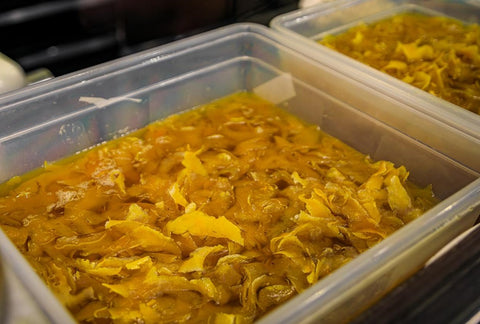
People have been making traditional limoncello in their kitchens for years, and you can too. From extracting the lemon zest to bottling the final product, this section guides you through every essential step of crafting this classic Italian liqueur.
- Extracting the lemon zest: The journey begins with extracting the lemon zest. Use only the yellow outer skin, avoiding the white part, which can give a bitter taste. A peeler or zester works best, allowing you to get thin, even strips that maximize flavor extraction.
- Infusing with the alcohol: Place the lemon zest in a large glass jar and pour the alcohol over it. The zest must be completely submerged. Seal the jar tightly and store it in a cool, dark place. This is where the magic happens, as the alcohol slowly extracts the oils and essence from the zest, soaking up the vibrant lemon flavor.
- Preparing the sugar syrup: While the zest is infusing, prepare the sugar syrup. Combine the sugar and water in a saucepan over medium heat. Stir until the sugar is completely dissolved, then let the mixture cool. This syrup will soften and mellow the acidity of the alcohol.
- Combining: After the infusion period, strain the lemon zest from the alcohol. Combine the infused alcohol with the sugar syrup, stirring gently to mix. The mixture will take on a cloudy but radiant yellow hue.
- Bottling: Pour the limoncello into clean, airtight bottles. Glass is preferred as it preserves the flavor and purity of the limoncello. Store the bottles in a cool place or in the freezer until ready to serve.
Infusion Time and Its Impact on Taste
The infusion time is a major factor in defining the essence of your limoncello. Here, we explore how different infusion durations can radically change the flavor profile of this beloved liqueur.
|
Infusion Time |
Flavor Profile |
|
1 Week |
Light and sparkling, with a pronounced citrus aroma. Ideal for those who prefer a fresher, less intense lemon taste. |
|
2-4 Weeks |
Balanced and rich, this duration allows for a deeper extraction of lemon oils, resulting in a rounder, fuller flavor. |
|
More than 1 Month |
Intense, with a robust lemon essence and a complex, mature character. Suitable for connoisseurs who appreciate a stronger, more aromatic limoncello. |
Tips for Getting the Best Flavor
Crafting the perfect batch of limoncello is an art that balances tradition with a personal touch. Here are some tips and ideas to enhance your limoncello-making experience:
- Quality of Ingredients: Always use fresh, organic lemons and high-quality alcohol. The purity of these ingredients directly influences the final taste.
- The Ratio Matters: Maintain a balance between the lemon zest and the alcohol, and adjust the sugar syrup to your preference. This balance is essential to achieve the perfect harmony between sweet and sour.
- Patience Pays Off: Do not rush the infusion process. The longer the zest infuses, the more flavorful the limoncello becomes.
Storage and Serving of Limoncello
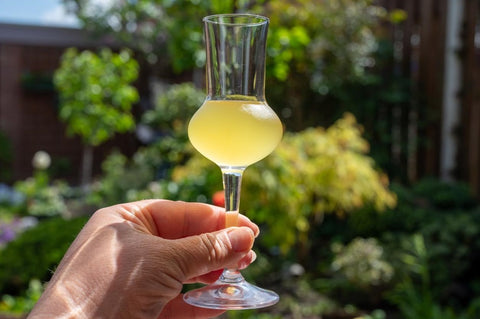
The way you store and serve limoncello can have a significant impact on its enjoyment. By following the best practices below, you ensure that every sip of limoncello transports you to the sunny lemon orchards where this liqueur was born.
Storing Limoncello
Proper storage of limoncello is crucial to preserve its exquisite taste and vibrant character. The ideal place to keep your limoncello is in a cool, dark environment, away from direct sunlight and temperature fluctuations. This could be a cellar or a dark cupboard. For those who enjoy a fresh and refreshing taste, storing limoncello in the freezer is also an excellent option. Its high alcohol content prevents it from freezing solid, allowing it to maintain a smooth, syrupy texture.
Serving Limoncello
How to serve limoncello the right way is just as important as making it. Traditionally enjoyed as a digestif, it is best served chilled, straight from the freezer. Pour it into small glasses that have been pre-chilled to enhance its rich flavors and aromas. Its versatility also makes it a fantastic ingredient for cocktails, adding a zesty lemon touch to create an exquisite limoncello cocktail. Additionally, it can be elegantly poured over ice cream or fruit salads, offering a delicious lemony enhancement to desserts.
The Lemon Brothers approach to Limoncello
At Lemon Brothers, we are proud to present a limoncello steeped in tradition, perfected by passion, and enjoyed by connoisseurs worldwide.
Made with heart and heritage
Our journey in creating this exquisite liqueur began over 15 years ago with Marco, an Italian native whose love for limoncello was as deep as his roots in Sanremo, Italy. It is here, in a small apartment overlooking the historic old town of "La Pigna," that the Limoncello of the Lemon Brothers, or "Limonceflo", was born.
It all started with a small lemon tree planted by Marco's wife, Hedi, nearly 30 years ago. This sturdy, fruit-laden tree became the symbol of our limoncello. Marco, inspired by the view from his terrace and the tradition of his country, embarked on a journey to create a balanced limoncello, perfectly blending alcohol, sugar, and the delicious taste of lemon. This recipe, refined over the years, was a family secret until Florian, a young dynamic Dutchman and digestif enthusiast, was introduced to it.
A Recipe Passed Down from Generation to Generation
Florian's fascination with the pronounced taste of lemon and the quality of the digestif led Marco to share his secret recipe. This gesture marked the beginning of the journey of the Lemon Brothers. By faithfully following the original recipe, we strive to maintain the authenticity and quality established by Marco and Hedi.
Sustainability and Community Involvement
In our production, we emphasize sustainability and community involvement. Our lemons are organically grown, hand-picked, then carefully selected, ensuring that we use only the best while supporting local producers. From peeling the lemons to the delicate application of labels on our bottles, every step is carried out with meticulous care in the canton of Vaud, Switzerland.
Awarded Excellence
Our dedication to quality has not gone unnoticed. The Limonceflo from Lemon Brothers has been acclaimed internationally, receiving numerous awards, including the prestigious gold medal at the 2021 Craft Spirits Awards in London and the double gold medal at the 2022 Berlin International Spirits Competition. These honors testify to our commitment to creating a limoncello that is not just a drink, but an experience.
Conclusion
Limoncello, much more than just a simple digestif, represents Italian tradition and craftsmanship. At Lemon Brothers, we are committed to this heritage. We meticulously blend ancestral methods with modern precision, ensuring that every bottle of our limoncello captures the essence of Italy's finest lemons. It is a celebration of our family recipe, a tribute to quality, and a shared experience of the timeless original taste of limoncello. With every sip, remember that you are not just enjoying a liqueur; you are partaking in a legacy that spans generations.
FAQs
What does traditional limoncello contain?
Traditional limoncello is made from high-quality organic lemons, usually Sorrento or Amalfi lemons, known for their aromatic zest. The other key ingredients are pure alcohol or high-quality vodka, water, and sugar. The zest is infused with alcohol, then mixed with sugar syrup.
Is limoncello fermented or distilled?
Limoncello is neither fermented nor distilled. It is made by infusing lemon zest in alcohol, usually a high-proof spirit like vodka or pure alcohol. This process extracts the aromas and oils from the zest, which are then mixed with sugar syrup.
What are the two types of limoncello?
The two main types of limoncello are classic limoncello, which is a clear, bright yellow liqueur, and cream limoncello, which contains dairy products to create a creamy and smooth texture. Cream limoncello is less traditional but has gained popularity for its rich and velvety variant.
Can bacteria grow in limoncello?
The high alcohol content of limoncello generally inhibits bacterial growth, making their proliferation unlikely. However, improper storage or contamination during the manufacturing process can potentially lead to bacterial growth. It is therefore important to follow proper hygiene and storage practices.
How can you tell if limoncello is expired?
Limoncello that has gone bad may show color changes, becoming darker or cloudy. There may also be an unusual smell, different from its usual lemon aroma. If it tastes sour or unusual, it is best not to consume it. Proper storage in a cool, dark place helps maintain its quality.






